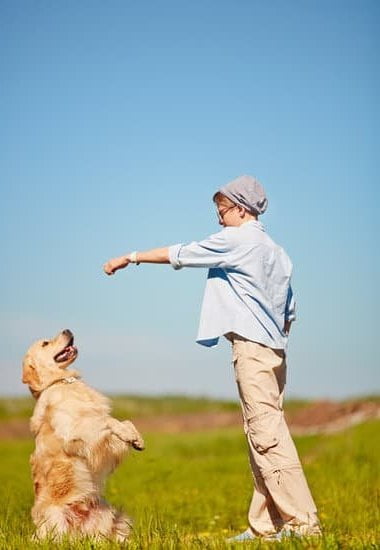If you have successfully crate-trained your first dog, you’re already ahead of the game with your second dog. The process is very similar for both dogs, but there are a few things to keep in mind.
The first step is to choose the right crate. It should be big enough for your dog to stand up, turn around, and lie down in comfortably. If you’re using a wire crate, be sure to get one with a divider panel so you can make the crate smaller as your dog grows.
The next step is to get your dog used to the crate. Start by putting the crate in a quiet, comfortable spot in your home and placing some of your dog’s favorite toys and treats inside. Let your dog explore the crate on his own, and don’t force him to go in if he doesn’t want to.
Once your dog is comfortable going into the crate, begin feeding him his meals inside the crate. Start with small meals and gradually increase the size of the meals as your dog gets used to being in the crate.
Finally, begin using the crate for short periods of time. Start by putting your dog in the crate for a few minutes while you’re in the room, and gradually increase the amount of time he spends in the crate. Never leave your dog in the crate for longer than he can hold his bladder or bowels.
If you follow these steps, your dog will soon be crate-trained and will love spending time in his cozy den!
Benefits To Crate Training A Dog
There are many benefits to crate training a dog. Crate training can help housebreak a dog, keep a dog safe when you’re not home, and provide a comfortable place for a dog to rest.
Crate training begins with teaching your dog to love his crate. Start by putting a few treats in the crate and closing the door. Praise your dog when he goes into the crate and give him a treat. Do this several times a day until your dog is comfortable going into the crate.
Then, begin to put your dog in the crate for short periods of time. Start with a few minutes and gradually increase the time. If your dog starts to whine or bark, tell him to be quiet and wait until he stops whining before letting him out of the crate.
Eventually, your dog will learn to love his crate and will be happy to relax in it when you’re not home.
How To Train A Dog To Stay In A Crate
There are a lot of benefits to crate training your dog. Dogs that are crate trained are less likely to have accidents in the house, they’re less likely to chew on your furniture, and they’re less likely to run away.
The key to successful crate training is to make the crate into a positive place for your dog. You want your dog to feel happy and comfortable in his crate.
Here are a few tips for training your dog to stay in his crate:
1. Start by putting your dog in the crate for short periods of time. Gradually increase the amount of time your dog spends in the crate.
2. Make sure your dog has plenty of toys and bones to chew on in the crate. This will keep him occupied and happy.
3. Don’t force your dog into the crate. If he’s reluctant to go in, try putting a treat in the crate or playing with him near the crate until he’s comfortable going in.
4. Reward your dog when he behaves well in the crate. This will help him learn that the crate is a positive place.
5. If your dog starts to bark or chew on the crate, calmly say “no” and put him back in the crate. Don’t get angry with your dog – this will only make him more resistant to crate training.
With patience and persistence, you can train your dog to stay in his crate. It may take a little time, but the benefits are well worth it.
Benefits Of Crate Training A Dog
Crate training is the process of teaching a dog to willingly enter a crate and remain there until released. The crate can be used as a place of confinement when the owner is unable to supervise the dog, as a place to sleep, and as a place to eat. Crate training is a very beneficial tool for both the dog and the owner.
The benefits of crate training for a dog include:
-The dog is provided with a safe and comfortable place to sleep
-The dog is prevented from engaging in destructive behavior when the owner is not able to supervise
-The dog can be transported in a crate without becoming agitated or stressed
The benefits of crate training for the owner include:
-The owner can leave the dog confined in the crate without worry that the dog will engage in destructive behavior
-The dog will not soil the house when left alone
-The dog can be transported in a crate without becoming agitated or stressed
Crate Training 1 Year Old Dog
There are many reasons to train your dog, but crate training is one of the most important. A crate can provide a safe and comfortable place for your dog to rest and relax in, and it can also be a valuable tool for house training.
If you’re crate training a one-year-old dog, there are a few things you’ll need to keep in mind. First, make sure that the crate is the right size for your dog. He should be able to stand up, turn around, and lie down in it comfortably.
Next, start by gradually introducing your dog to the crate. Put a few treats inside and let him explore. Once he’s comfortable going in and out of the crate, begin closing the door for short periods of time. Gradually increase the amount of time he spends in the crate.
If your dog starts to whine or bark, don’t give in and let him out. Wait until he’s quiet before opening the door. This will help him learn that whining and barking won’t get him what he wants.
It’s important to keep in mind that a crate is not a substitute for proper house training. You still need to be diligent in taking your dog outside to pee and poop. A crate can be a helpful tool, but it’s not a cure-all.
With a little patience and persistence, you can train your one-year-old dog to love his crate.

Welcome to the blog! I am a professional dog trainer and have been working with dogs for many years. In this blog, I will be discussing various topics related to dog training, including tips, tricks, and advice. I hope you find this information helpful and informative. Thanks for reading!





